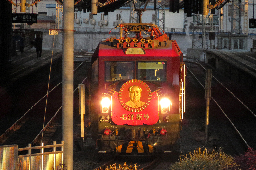Many of you may already be familiar with the term "gadgetbahn". Gadgetbahns are various transportation devices that are meant to fill the same niche as trains, but aren't trains. They serve as a sort of grift, allowing inventors to talk about how great they are compared to trains, without having to prove themselves as usable. The best examples of gadgetbahns I can think of are Elon Musk's Loop and Hyperloop, along with all the dumb stuff Dahir Insaat does. Here's a blog post about it.
Monorails are often accused of being gadgetbahns. But are they? I argue that some monorails are gadgetbahns, while others are not. Monorails have a series of issues that should be discussed:
-Often stuck with one vendor for rolling stock that can go out of business
-Switching tracks is much more complicated on most systems than regular trains (with some exceptions)
-Aren't compatible with existing rail infrastructure
-can be a bit more bouncy ride than a regular train
But let's talk about the benefits first:
-leads to a lighter streetscape compared to elevated rail
-can go up steeper grades than traditional rail
-can be automated (v.s. light rail)
-simple to construct
The ability to climb steeper grades is probably the best point here. Monorails are ideal for steep urban areas. I would argue that the best example of what monorails can do is the Shonan Monorail. It runs through steep and narrow streets along a single track in the sky. Passing points at several stations allow for trains every 7-8 minutes. I have a hard time imagining any other technology that can do this. The switches for the SAFEGE monorail technology are actually fairly simple and thus allow for easy switching. There are many monorails in Japan that have decades of service to back them up, including the Tokyo Monorail, Osaka Monorail, Chiba Monorail, and Nara Monorail. In China the Chongqing Monorail (pictured here) is the longest monorail system in the world. The Wuppertal Schwebebahn has been in operation for 120 years.
So why is the monorail considered a gadgetbahn?
Because it is so often marketed and used as such. It's used at theme parks, world's fairs, and malls. It's marketed as being ultra cheap and being able to make a profit. It's sold by private hucksters as a system better in every way than an old-fashioned train. It's amazing! It's cheap! It's the Future™!
Monorails are not immune to bad transit planning. A monorail in a one-way loop around downtown (RIP Sydney Monorail) is bad transit planning. A monorail that never gets built is even worse transit planning. The Disneyland Monorail is a gadgetbahn, but the Chongqing Monorail isn't. Why? Because the Disneyland Monorail goes in a slow, meandering, one-way loop between two stations, and the Chongqing Monorail is a rapid transit system with extensive service.
Monorails can't do everything. Save for a few examples, they are equal or worse compared to a rapid transit line. But in a few cases, they have a slight edge against traditional rapid transit and should be considered. These cases would be: -Narrow roads with steep grades (Shonan Monorail)
-Areas prone to flooding (Chongqing)
-Above a river (Wuppertal, Chiba)
In conclusion,
MONORAIL GANG, but only in niche cases


Important thing about monorails or other rubber tire guideway vehicles: They’re extremely quiet compared to steel tire trains.
also they produce a lot more microplastics